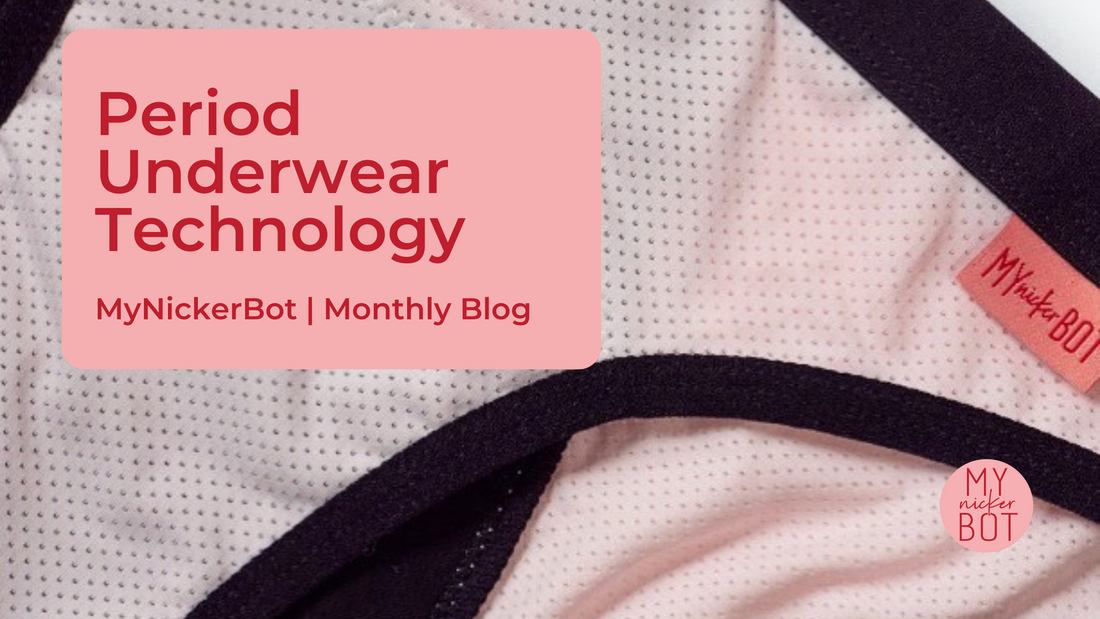
How Does Period Underwear Technology Work?
Share
Period underwear was designed and created to liberate women from their dependence on disposable sanitary products. And it's still growing in popularity is just phenomenal.
They look and feel like regular underwear, and are designed to be washable and reusable. They are definitely easy to clean and are an affordable and environmentally friendly option.
What is Period Underwear?
Period underwear are undergarments that you can use during your period without the need for using disposable sanitary products such as pads or tampons.
The difference with period underwear is the presence of special layers that helps prevent blood from seeping through your clothes. No bulky discomfort that comes with wearing pads or having to insert a tampon to contain blood flow.
Period underwear serves another purpose by being our and the planet’s best friend during our monthly menstrual cycles. Apart from being absorbent like a pad, they are leak-proof, and offer odour control, keeping us dry and fresh all day — and night.
Breaking down Period Underwear.
Another type of period underwear is an entirely disposable product with a sanitary pad built in. This one time use product doesn’t look all that appealing, nor does it look comfortable to wear. Use it once, and throw the entire thing away. Not good.

Growing in popularity, and relatively new period underwear has a three-layer or four-layer gusset system that comes in various styles, designs, and absorbency levels.
The first layer closest to the skin when worn, the moisture wicking layer, pulls blood and moisture away from your body. This knitted first layer has lots of channels allowing fluid to move through it. It is water-repellent, and also has a feature to fight odour-causing bacteria.
The second layer is super absorbent that does the work of absorbing the blood and capable of holding two to three tampons worth of menstrual fluid on average. There are models capable of holding more, perfect for your heaviest of days.
The third layer or the outer layer is made up of water impermeable material, stopping fluid from leaking.
In some models, there is a fourth and outermost layer. This is the visible part of underwear, keeping it all in, in one neat little package that is stylish, comfortable, and more importantly, breathable.
Mynickerbot’s Special Technology
Mynickerbot’s special design wicks away moisture and bacteria, keeping you fresh and dry. Our specially made 3-layer technology works as a moisture evaporator by using a special blend of bamboo fabric as the layer closest to the skin. It has a unique property that absorbs moisture internally due to the presence of a hydrophilic core. The bottom layer of our line of period underwear is made of a special fabric that will prevent any leaks.
Our use of smart and high-tech fabrics combined with organic material's nature provided us. This ensures our fabrics are antimicrobial and odour resistant. Incorporated within our specialised design and technology is SILVADUR™, which inhibits the growth of odour and infection-causing bacteria.
You are assured of being confident and comfy, even on your heaviest of days, sista!
Should you make the switch to Period Underwear?
We women, on average, will have 450 periods in our lifetime. While periods are certainly still no fun thing, especially when we have no actual control when it arrives. And more often than not, it arrives when we least expect it.
We use about three to five pads, or two to three tampons, per menstrual day. Imagine how many disposables we use for an entire complete cycle, lasting between three and seven days.
We will menstruate an average of 38 years. If one woman uses disposables exclusively, the amount of environmental waste one woman alone will produce would be staggering. Add to that the amount we have to spend buying these products.
If preserving the environment is an important factor for you (as you must), then consider making the switch to period underwear.
Period Underwear won’t break your bank.
It’s true that the initial expense in acquiring period underwear may seem steep, but they will actually save you more money in the long run.
They were indeed expensive two years ago, and only one or two brands were available. Not anymore. Multiple companies now produce period underwear with various designs and styles. They also came out with great period swimwear such as, Mynickerbot’s Period Swimwear Bottoms — Navy Blue. No longer do we have an excuse not to go in the water, on the beach or in a pool during our period.
If we spend about AUD $19.54 each month on disposables, you still would be able to make up the cost in 24 months. The fact is, while you already have “disposed” your used pads and tampons ending up in a landfill somewhere, the period underwear is still around.
If you take good care of your period underwear well, they will last you a few years. Additionally, due to their rise in popularity, they are now easily available with varying style, design, and price points, the same as your regular underwear.
In Conclusion
With the right pair of period underwear, you won’t have to worry about leakage, you become an eco-warrior, and you’ll have a comfortable and cost-effective menstrual experience, month after month.
I would encourage every woman to try them out. You might be more than pleasantly surprised how really great they are.
Ready to give period underwear a try? Order a pair or more from our Bundle Packs and First Period Kits and embark on your new journey of freedom and comfort every month. For younger ladies, you may get our Organic Cotton Bikini Brief for Teens. Mynickerbot makes period underwear that simply works.
